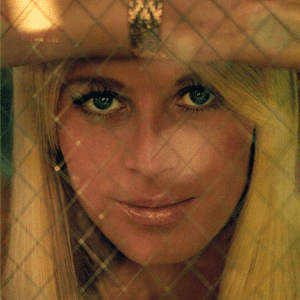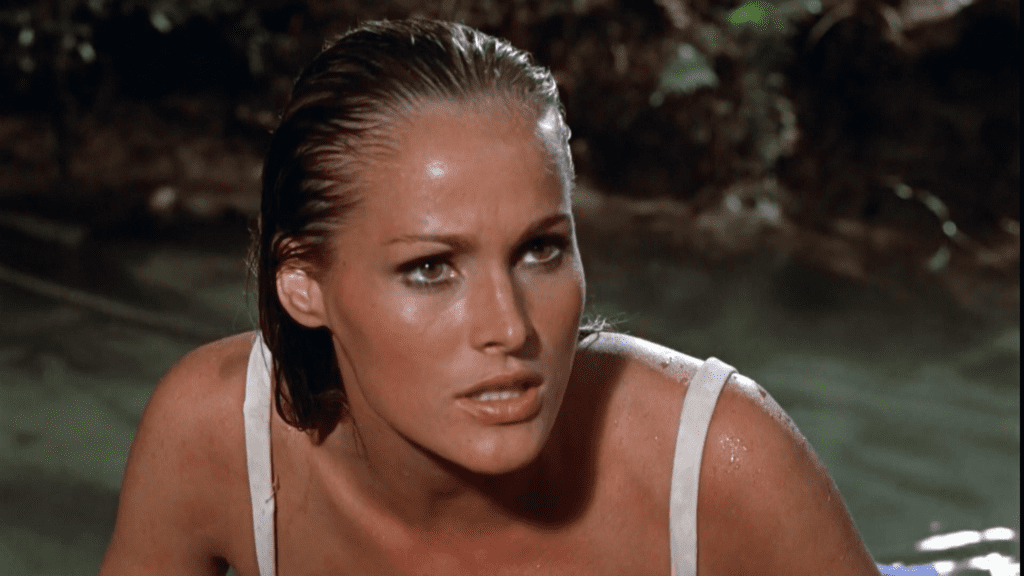
When Dr. No premiered in 1962, audiences around the world were introduced not only to Sean Connery’s James Bond, but also to one of the most iconic female characters in cinematic history: Honey Ryder, played by Ursula Andress. Her emergence from the Caribbean surf, seashells in hand and confidence in every step, became an image that transcended time.
This singular performance didn’t just launch Andress into global fame—it redefined the image of women in action cinema and helped cement the Bond film formula that would echo through generations.
Video: DR. NO | Bond meets Honey
Filmed in Jamaica, Dr. No was the first installment of what would become the longest-running film franchise in history. However, among the gadgets, villains, and espionage intrigue, it was Andress’s entrance that left the strongest cultural imprint.
Wearing a white bikini with a utility belt and knife, Honey Ryder’s first appearance was both striking and groundbreaking. Her physical presence, combined with an unshakable composure, conveyed a type of character rarely seen at the time—a woman who was both mysterious and capable, sensual and assertive.
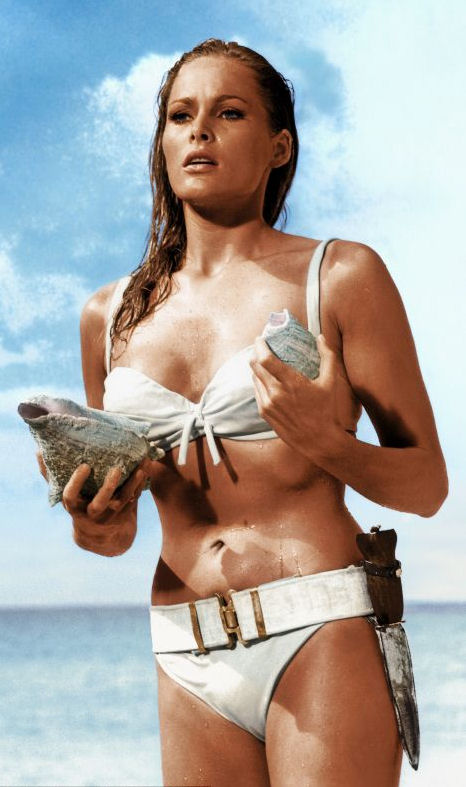
While her dialogue was dubbed for the English release (by voice actress Nikki van der Zyl), Ursula Andress’s screen presence spoke volumes on its own. With just a few minutes on screen, she established a persona that would forever be linked with the definition of cinematic allure.
Prior to Dr. No, Ursula Andress had made appearances in a handful of European films and television projects, but it was this role that catapulted her to international fame. The film’s success opened doors across Hollywood and Europe alike, allowing her to land leading roles in both English and Italian productions.

In the wake of Dr. No, Andress starred alongside major names such as Frank Sinatra, Elvis Presley, Marcello Mastroianni, and Peter Sellers. She became a recurring figure in adventure films, romantic comedies, and historical dramas throughout the 1960s and 1970s.
Some of her best-known titles following Dr. No include:
- Fun in Acapulco (1963) with Elvis Presley
- She (1965), a fantasy adventure in which she played the mythical immortal Ayesha
- The Blue Max (1966), a war epic set in World War I
- Casino Royale (1967), a Bond satire in which she reprised a Bond-like allure in a humorous twist
Her ability to move between genres demonstrated her range beyond the archetypal “Bond girl” label.
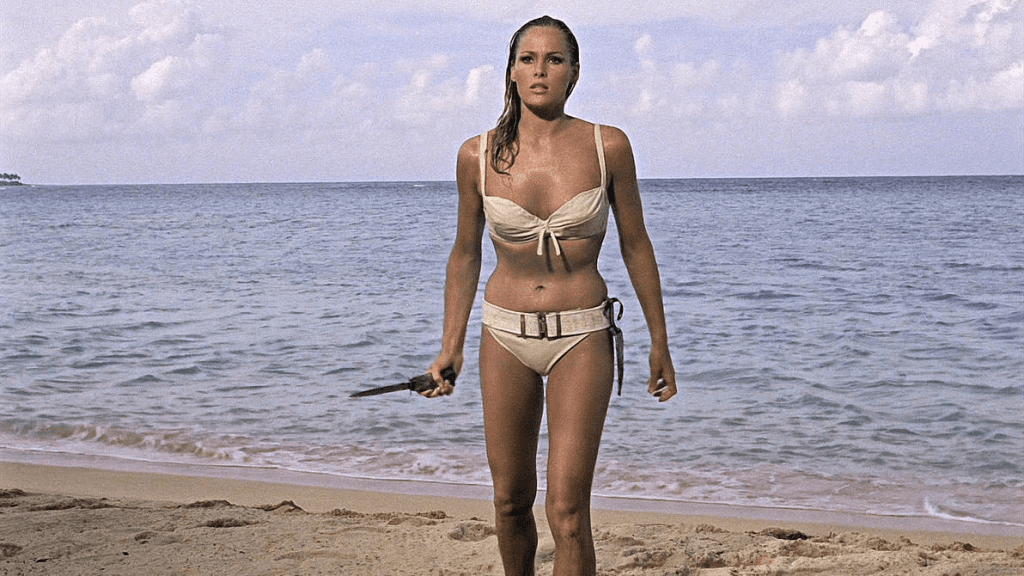
The making of Dr. No wasn’t just a film shoot—it was the origin of a cinematic revolution. Filming in exotic locales like Jamaica brought logistical challenges, but it also provided the perfect backdrop for the sensual mystique of Honey Ryder’s introduction.
Andress’s famous beach scene was nearly improvised. The swimsuit, designed by Andress herself with the help of the film’s costume team, became one of the most imitated garments in fashion history. The knife strapped to her waist added a layer of character depth—it wasn’t just about beauty, it was about self-reliance.
Video: Dr. No (8/8) Movie CLIP – Love at Sea (1962)
Andress later recalled that she never expected the role to define her legacy. She accepted the part largely due to the exotic filming location and a lack of English-speaking actresses willing to take the role at the time.
Honey Ryder was more than a character—she became a symbol of empowerment wrapped in cinematic fantasy. Her boldness helped usher in a new standard for female characters in genre films.
In 2001, the bikini scene was voted the most memorable in film history by the British Film Institute. The white swimsuit was even auctioned years later for an impressive sum, underlining its lasting symbolic power.

More importantly, Ursula Andress opened the door for a new generation of actresses who wanted to bring depth and presence to blockbuster roles. The balance of sensuality and survival instinct that she portrayed became a template—used, revised, and reimagined for decades to come.
In her later years, Andress chose to step back from the screen, but her legacy never faded. Interviews and retrospectives consistently highlighted her contribution to the early success of the James Bond franchise and her pivotal place in film history.
She was never content to be remembered for her looks alone. Her subsequent performances showed an actress capable of more than visual impact. She embraced dramatic parts, often playing women with complex backstories and moral conflicts.
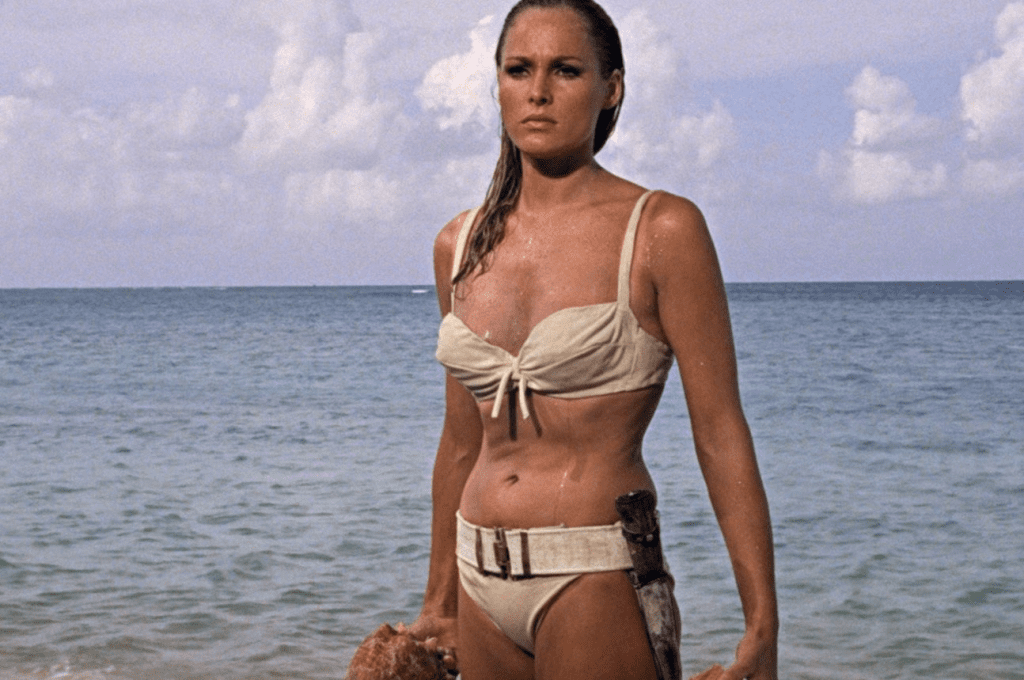
Today, Dr. No remains essential viewing for film scholars and fans alike—not just for the introduction of Bond, but for the bold entrance of Ursula Andress, a woman who redefined expectations.
Ursula Andress’s portrayal of Honey Ryder was not a fleeting moment—it was the start of a cultural shift in cinema. With confidence, charisma, and an unmistakable presence, she gave audiences a heroine unlike any seen before.
Through this single role, Andress ensured her place in film history—not as a footnote, but as a figure who helped define the golden age of action and adventure.

